
Caravaggio in the attic

Imagine this: you are living in an old house and one day your roof starts to leak. You have to fix it – so you go to the attic and look for the leak. Instead, you find an old painting; and it turns out that it may be a lost masterpiece by Caravaggio. If the authorship is accepted, your painting from the attic is worth around 120 millions euro. Sounds like a fairy tale? Well, it has just happened in Toulouse, in France!
The painting in question depicts Judith Beheading Holofernes. It was a popular subject matter and it was also painted in the other version by Michelangelo Merisi da Caravaggio (1571-1610) (I have once wrote about a different painting by this artist, the archive post is available HERE). The well-known Judith by Caravaggio is in Galleria Nazionale d’Arte Antica in Palazzo Barberini in Rome:
Judith was a Biblical heroine (see the Book of Judith): she was a young widow who rescued the Israelites from being defeated by the Assyrian general Holofernes. She tricked him: she actually went to his camp only assisted by one maid and surrendered. She risked her life as Holofernes may have decided to kill her, but she trusted her beauty and she was right: Holofernes decided to keep her alive, as he desired her. He invited her for a feast and had some romantic plans, but unfortunately he drunk too much… when they were left alone in his tent he passed out before anything happened. That was the opportunity Judith was waiting for: she simply beheaded him when he was asleep. The lost his head over a woman: literally.
Most of the artists depicted Judith holding Holofernes’ head after she beheaded him, as the beheading itself must have been rather an unpleasant situation. We should not think that it is possible for a woman to cut off man’s head quickly, so he would stay asleep; it is not as easy as that. Caravaggio knew it and depicted the event in quite a realistic way: Judith is slowly cutting of the Holofernes’ head; if she started with his throat, he could not scream anymore. But it is quite certain that he woke up – and he probably immediately sobered up as well!
But let’s get back to the surprising find in the French attic. The thing is that Caravaggio did paint at least two versions of Judith: one is still in Rome, but the other was so far known from the written sources and a probable contemporary copy. There is a letter by Frans Probus of 1607 that mentions the lost painting as sold in Naples; it probably was acquired by the painter Louis Finson and listed in his will in 1617. It is actually Louis Finson who is assumed to be the author of a possible copy of the lost Caravaggio – that copy is now in the collection of Banco di Napoli:
And now another canvas was discovered in Toulouse: it may be another copy, but it may be the original, considered as lost since at least 18th century. The painting is now being examined in Louvre, and of course the Caravaggio experts are discussing it as well. We don’t know the outcome yet – but the French government already listed the painting as “national treasure”, just to be sure it’s safe in case is was indeed a genuine Caravaggio.
Caravaggio’s art is extraordinary: apart from fascinating chiaroscuro, it also often contains quite realistic depictions of unpleasant details. Apparently it may seem drastic even to the nowadays viewer: BBC article on this painting is actually labelled with a warning that the images featured in it are graphic!
And when we are on the issue of the realistic details: can anyone tell me what is wrong with the old woman’s neck? It surely looks rather bad:
As a medievalist and art historian from Cracow I immediately associate such a thing with whatever was depicted by Veit Stoss in the High Altar in the Our Lady’s Church in Cracow:
According to the medical research by prof. Franciszek Walter (published already in 1933) Veit Stoss depicted there a fibroma, however it may look like a goitre. Well, in case of the woman in the newly discovered painting it seems that the thyroid problems are most likely… but I suppose that is for the experts to tell.
Is this painting really a genuine lost masterpiece by Caravaggio? The specialists say it may be, but for now it is still uncertain. I am not the expert on Caravaggio and I only had an opportunity to look at the photos, but judging from that I must say that for now I have some doubts. For example, the composition seems partially awkward to me, the old woman’s wrinkles look a bit unnatural, and I am also a little troubled by the contrasts in the painting of body areas in this picture. I would just say that for sure the well-known version in Palazzo Barberini in Rome is simply much better. But anyway, it is still quite a luck to find such a painting in your attic! Whatever happens, the owners should keep a cool head. Holofernes didn’t.





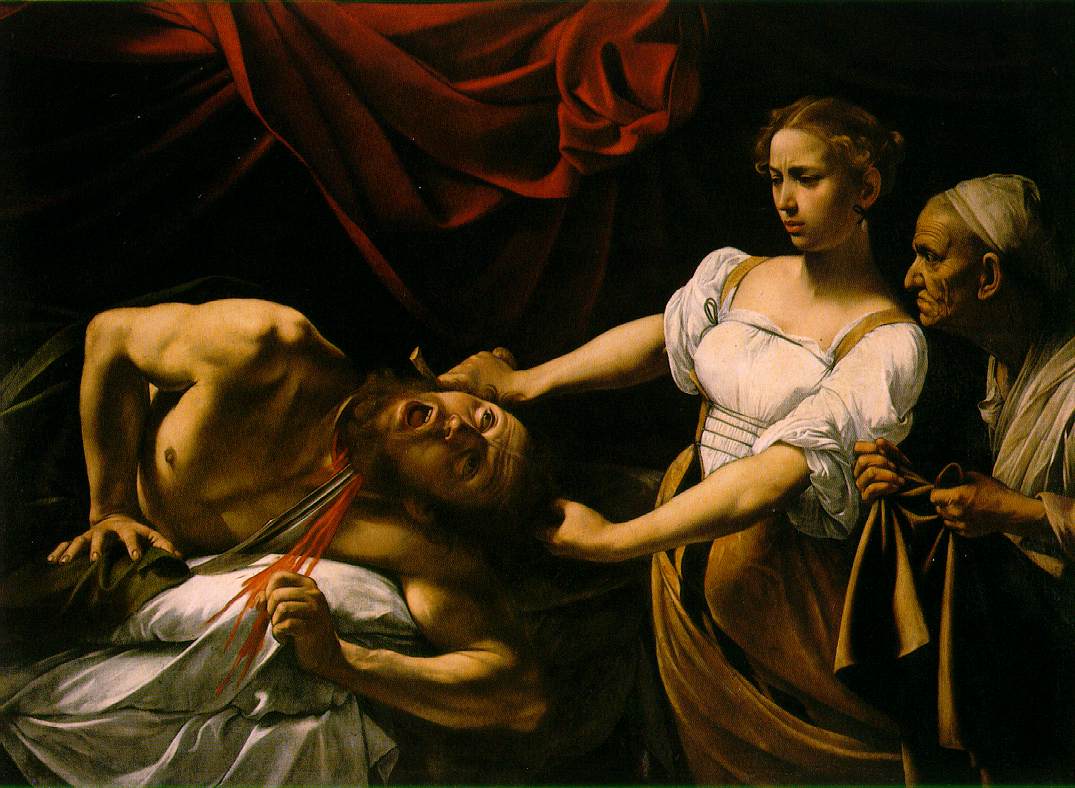

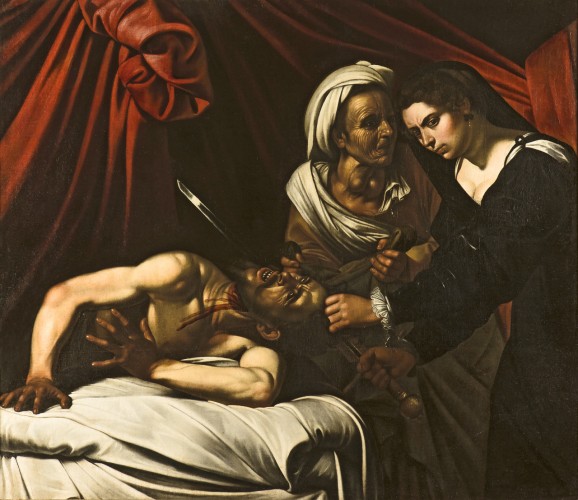
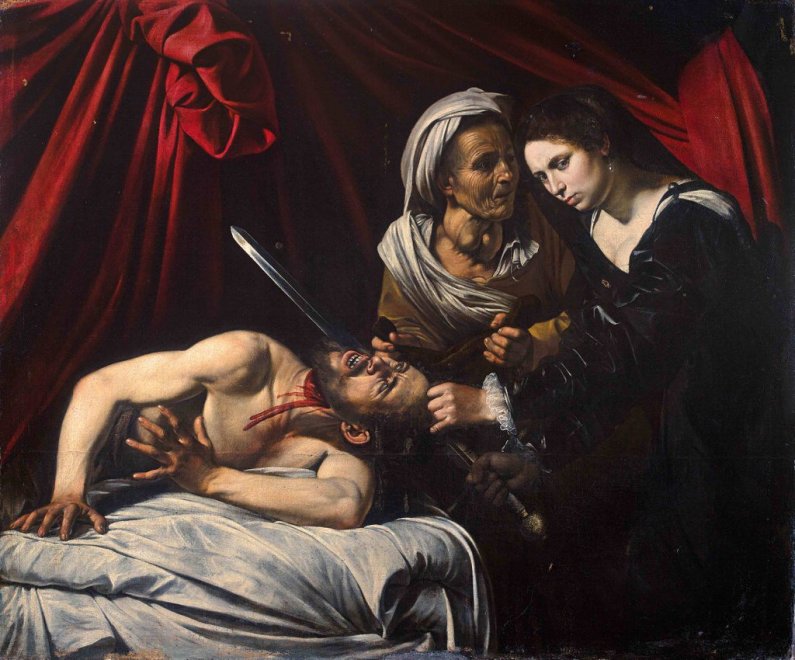
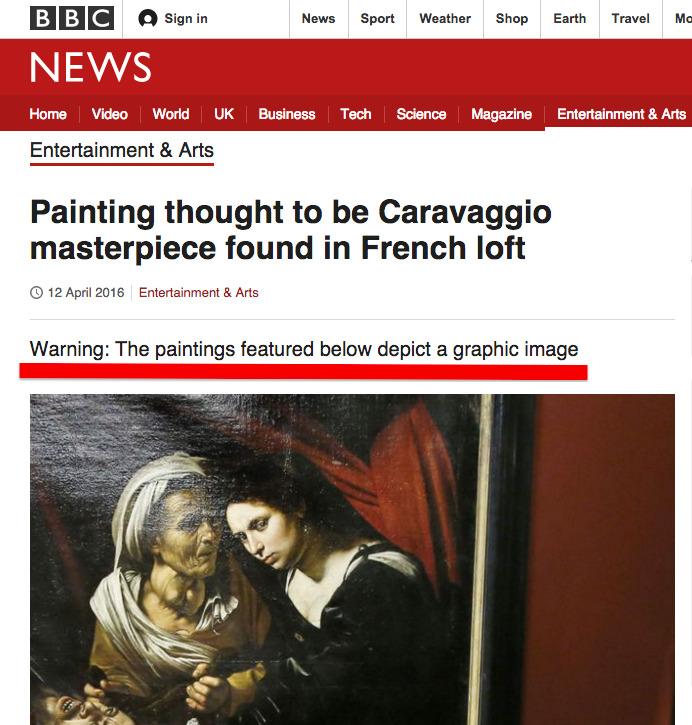

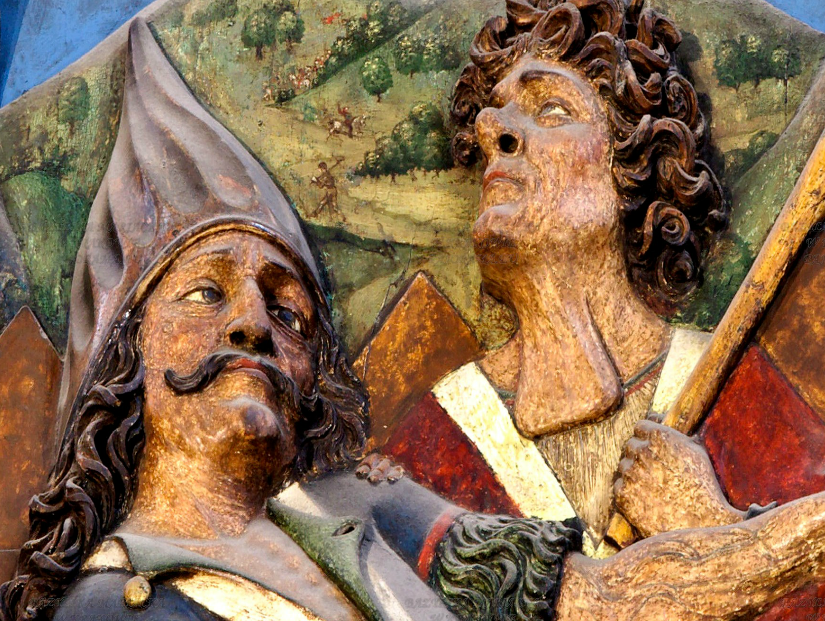

Wow! Her neck really is fucked! 🙂
Well, yes…